

Because the Sundered population is mostly a thin scattering of individuals and communities like Cryptic Nations are rare and short-lived, there is not a lot of Sundered history. The Kerdeans are the main force trying to come up with one.
According to them, some idea of the various otherworlds is immemorial. But various communities here in the home-zone have different, unshared ideas of them, except where the Kerdeans managed to gather data.
The Sundered world is now in an Age of Exploration, starting shortly after World War Two:
Grand Normandy's rivals and critics point out that it is hard to make sure when you are on a spherical world in an infinite universe and when you are just in a large open-finite worldlet. They often claim that, even if Grand Normandy has not claimed wide territories in the out-zones yet, this claim to know and have mapped so much of them is a first step in that direction.
Everyone has their own dreams that stay inside their skulls, but there is also the Dreaming, the Dream World. This is a realm of nothing but prana/vis/chi, shaped by the collective unconscious—not only the human unconscious, but that of animals and even things that are never really conscious, such as the spiritual aspects of plants and the elements.
Humans can reach the Dreaming in their dreams, of course. Conscious humans can reach it in states of lucid dreaming or astral projection. Humans can also enter the dreaming bodily, but this requires more-than-human magic, by fays, djinn, or the like.
Though they may enter bodily, living humans cannot really live in the Dreaming long-term. Dream food and water is not real, material. To colonize the Dreaming, every bite of food and drop of water would need to be imported. It would be wholly inaccessible if prana could not substitute for air (or, more exactly, breath). Short military excursions are possible, though. Ghosts, however, can haunt the Dreaming indefinitely, and fays and djinn have colonies there.
Access is much easier through one of the entrances created in past ages by dream-mages (or djinn lords or dragon kings or something). These include:
On entering the Dreaming, travelers start in dream versions of the places they entered. Therefore, using the Dreaming as a shortcut through the waking world can work, and can be fast, but is not instant or effortless.
Humans (or any of those who are theologically “human,” “children of Adam”) have the power to shape the Dreaming, because they are the present Stewards of this world. (Djinn had the Stewardship for a few millennia before Adam. Long before them, the Dragons had it. Maybe there were others. Humans could lose it.) Living and sentient things can be created in the Dreaming, but are enormously more costly. Bringing things out of the Dreaming is also very costly, but possible.
What is known:Grand Normandy and other developed cryptic nations, the Kerdeans, and proficient dream mages know all the above, and realize there may be additional entrances they have not heard of. Different parties are aware of different sections of the geography of the Dreaming.
Less well-connected Sundered folk may confuse the Dreaming with the Astral and both with the afterlife (due to the presence of ghosts).
If the Dreaming is the realm of desire and fear, the Astral Plane, also called the Noetic Plane, is the realm of memory (the “akashic record”), expectation, and planning—thought vs. emotion. It consists of house- to city-sized mindscapes, representing the memories, expectations, and plans of populations, species, and (mutatis mutandis) even the Earth. They are organized five-dimensionally. Three of them are the dimensions of normal space. The other two are past-to-future and dark-to-light (hellish to celestial).
It is important to bear in mind that, when you visit pastward mindscapes, you are visiting memory, not actual history. This is not time travel. The same is true futureward. Thus the dark or infernal past and the light or celestial past do not match the actual past.
As with the Dreaming, and for the same reasons, living humans cannot dwell in the Astral permanently, though ghosts, fays, and djinn can.
Since the Astral matches more exactly to the material world than does the Dreaming, it is not much use as a short-cut. It does not have specific entrances the way the Dreaming does.
What is known:Grand Normandy and other developed cryptic nations, the Kerdeans, and proficient shamans know all the above, or are at least aware of the theological bits as things some people believe. Different parties are aware of different sections of the geography of the Astral.
It's common knowledge among the developed cryptics and the Kerdeans that Grand Normandy, the Sunset Empire, Old Christendom, and other cryptics have outposts in the Astral, though they certainly don't share details. The existence of the newly created astral city of New York, New York, New York (or “NY3” or “the Big Cube”) is public knowledge.
Less well-connected Sundered folk may confuse the Astral with the Dreaming and both with the afterlife (due to the presence of ghosts).
Unlike the Dreaming and the Astral, the Alter-Zones are quite physical, though where they are is still not certain. Hyperspace is a popular candidate. In a wholly disjoint set of dimensions, like Narnia, is the other candidate. It may be some are in one and some in the other.
The alter-zones are the object of Grand Normandy's much-touted Age of Exploration. Grand Normans distinguish three broad types of Alter-Zones, by geometry. There are infinite, closed-finite, and open-finite.
Infinite zones appear to be parallel universes. They have cognates to the major geographical features of our world. Hod, seen in “Tamer of Horses,” is an example.
Closed-finite zones are the rarest and have geometries that circle back on themselves, without borders.
Open-finite are the commonest and have Chaos Marches at the borders, with the occasional handy, if shifting, paths.
Finite zone are also called abatons (from Greek, meaning an inaccessible place), though the term is mostly used by the Sunset Empire and Old Christendom. Some abatons are known to be artificial, so some people claim they all are, even if the makers can no longer be identified. See “Abatonics.”
Out-zones of all types sometimes appear to be organized into natural groups, like islands into archipelagoes, by virtue of the connections—passages and paths through Chaos Marches—between them. Major groups known to Grand Norman geography include Brendan's Reach, the Yggdrasil Reach, the Genesis Partition, and the Road to the Sun (q.v.).
Passages vary a lot. Some are trails through Chaos Marches. Some are magic gateways in hills or henges or, for instance, wardrobes or looking-glasses. Some you feel for in the edgestorms that boil perpetually at the borders of open-finite zones where water meets chaos. Some work through cyclones.
Some stand open, some need to be opened, some open of themselves on a schedule or randomly. Some are artificial, some are natural.
Merely human magic can't create a passage, and can seldom open or close one unless more powerful magic has made arrangements for that.
Human magic and psychic powers can find passages. Thus humans can sometimes forge new trails through Chaos Marches. Human psychics and diviners can sometimes divine how to operate passages, if they're operable.
The central academic output of the Grand Norman exploration program is passage maps, which resemble annotated flowcharts.
“Abaton” is the generic name for a pocket universe or “dimensionette.” Abatons could vary wildly in internal furnishing, but in fact they tend to look like pieces of Earth's surface. (Or, plausibly, if they don’t, we never go there.) Most have an open finite geometry and “fray” at the edges into chaos that gets worse and worse until it becomes impassible and, perhaps, gives way to hypespace. The term is Greek for “inaccessible place”.
Some abatons are known to be artificial, and it may be that all of them are. The known artificial ones are mostly very small, though there are some major exceptions, such as Faerie, which is the size of Europe, plus a fair bit of sea. Artificial abatons have four main structural features: nucleus, reality anchor, fisherking, and mundane connection.
- Nucleus
- The object around which the abaton is built.
- Reality anchor
- The core area of the abaton around the nucleus, which defines the character of the abaton.
- Fisherking
- The person(s) in charge of this arrangement, generally the founder and any successors.
- Mundane connection
- The resemblance to part of Earth, counterpoint to the reality anchor, contributing background.
It may be the ones that don't look artificial have these features in unrecognized form, or survived the loss.
An abaton starts out in the Void (hyperspace or utter nullity; people argue for both), completely without spatial relationships. The nucleus provides something to build spatial relationships with.
Examples: the Grail in Carbonek, the Tree of Faerie, the Glass Mount of Avalon.
The reality anchor is the immediate environs of the nucleus and provides a template for many other objects that are conjured up in the baby cosmos. Therefore, the nature of the reality anchor has a pervasive effect on the furniture of the abaton.
Examples:
The borders between the reality anchor and the rest of the abaton may be hazy. What about the Lake of Avalon, where the Isle lies? What about the shore of the Lake? Where, exactly, in the realm of Avalon, does the anchor end?
Abatons generally require someone to own them, or someone to own. The welfare of the two is linked. If something goes wrong with the abaton, the fisherking will generally know instinctively how to fix it, if it is fixable. The creator of the abaton is its first fisherking, but need not be the last. Fisherkings can be singular or plural.
Examples:
Abatons are generally created on Earth, or more generally in the primary continuum. As they grow, templates for the patterns of growth come from the place where the abaton was created, or the places on Earth where they are later connected. This is in addition to the templates from the reality anchor, so abatons show some mixture of the two sets of templates.
Examples:
Based on information received from the Court of Harmony shortly after the Breakdown, many cosmographers among the Kerdeans and Grand Normans believe that open infinite zones—the ones that appear to be complete parallel worlds—are “partial realities.” They are subsets of full reality, and a suitable collection of them sum to full reality, the way the notes of a chord combine in the chord, or the way flour, sugar, eggs, and so on combine it a cake.
A better analogy, and one that may actually bear on the nature of partial realities, is Feynman’s “sum over histories” method. Richard Feynman created an alternative formulation for quantum mechanics by summing the wave functions of all possible histories of a system, demonstrating that this sum is the wave function of the actual system. If the system is the whole physical universe, partial realities are partial sums of wave functions for possible worlds.
Note the difference between this and the way we usually think of the relationship of actuals and possibles. We think of an array of possibilities, one of which is tagged as actual. In this formulation, the actual is composed of all the possibles combined.
Full reality can then be mapped as an N-sphere in an N-dimensional phase space where N is a very large but finite number. Partial realities are then N-volumes carved out of this sphere. As such, they can be characterized by mathematical features:
- Reality fraction: the fraction of the full-reality sphere occupied by the partial reality volume.
- Varies from 0 to 1. The smaller the reality fraction, the less effect it has on full reality, the less it can retain real objects, and the more it exhibits the magical properties of partial realities. See “Distinguishing Features” below.
- Ontological moment: the distance from the center of the full-reality sphere to the center of volume of the partial reality.
- Varies from 0 to 1. The higher the moment, the less the partial reality resembles full reality.
- Fractility: the fractal dimensionality of the surface of the partial reality volume, measuring how “smooth” or “rough” it is.
- Varies from 0 to 1. The higher the fractility, the more quixotic and chaotic the partial reality.
- Continuum number: the number of pieces the partial reality volume consists of.
- A natural number. Most partials appear to be a single piece. The ones that are not are systems of multiple interrelated worlds.
Most of the time, to casual observation, being in a partial reality seems no different from being in full reality. But the following features reveal the difference:
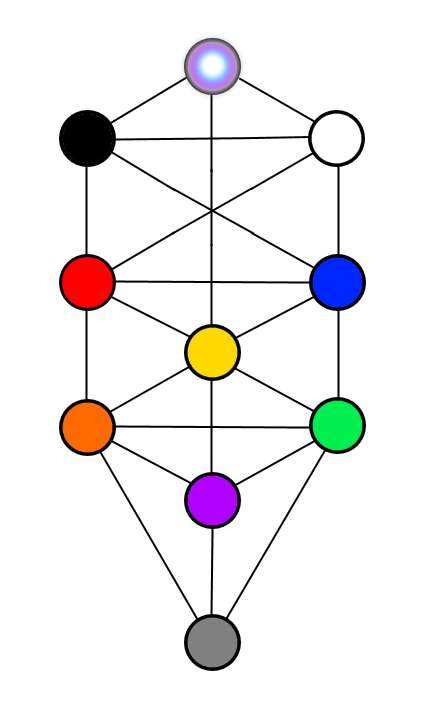
This is the current star attraction of the Grand Norman exploration project. The main features are several parallel universes with lots of robust connections that organize them into three "lanes" of the Road, left, right, and center. Each of these main zones is attended by crowds of smaller zones, mostly open-finite abatons.
The group is called "the Road to the Sun" because, as you progress down the road, the shortest paths back to mundane Earth come out to places further and further east across Eurasia, toward dawn as it were.
The zones of the road resemble the home zone, but each has significant differences, detailed below. All are thinly populated with a mix of humans, djinn, and fays. In no zone are humans the majority. Most people are either nomads or live in city-states, with humans having the highest populations in city-states. Many city-states, especially large ones, have mixed populations of human, djinn, and fays.
The low population and the benefits of banding together probably account for the common occurrence of city-states.
It is clear that the people of the out-zones know about the home zone, but they seldom come here, and the further away, the more rarely. Probably they do not want to put up with the Sundering.

There is a school of thought that, if a Cryptic Nation doesn't die out, its next likeliest fate is for its demographic and political center to migrate into the out-zones, to get away from the Sundering. Against this is the more dangerous company you find in the out-zones.
The Road name for Middle Earth, Moyen-terre, Midgard, the home zone, here.

Nearest and on the center lane. The Grand Norman outpost Yesod-Ra guards iits end of the passage through Yetzirah to Tiphereth.
The moon looks four times bigger, with vast tides in consequence. The huge tides cause monthly cycles of stormy weather. The daytime sky is a darker blue.
Land is divided between rugged mountains and plains encircled by crater walls with a huge range of sizes. There are no deserts; all areas are well watered. Stones and soil are pale. Silver and amethyst from Yesod is abundant and especially apt for use in enchantment. Seas and vegetation are purple. Flowers and eyes strongly tend to purple.
The population is mostly "Fair Folk"—tall, pretty fays. There are also large populations of nocturnal beast-fays, ghost-derived fays, individuated water and metal elementals, and djinn.
Virtually all cities are walled in natural crater rims. The cities are mostly Renaissance-like or Hellenistic city states, full of plots and conspiracies, including many relating to traffic with and affairs on Malkoth.
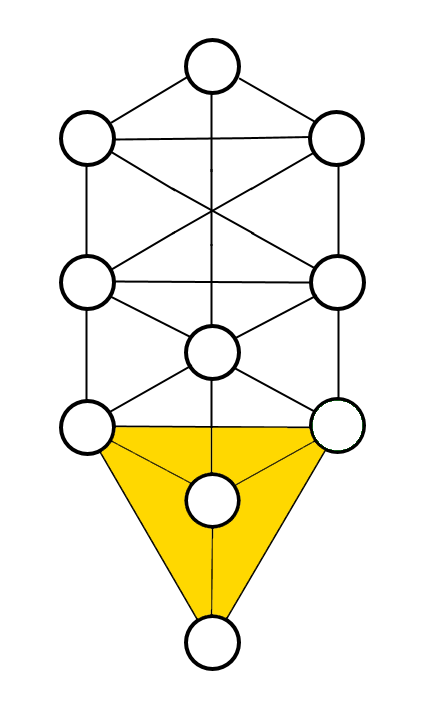
There are a great many small, messily connected zones near Yesod, between it and Malkoth, Hod, and Netzach. These are collectively called Yetzirah. Brequelle might belong in Yetzirah, depending on who you ask. Grand Normandy has a permanent outpost there, Yetzirah-Thoth, where Daniel Brice's famous brother Ed is stationed.

Further and on the left lane. Grand Normandy has an outpost here called Hod-Amon, at the location cognate to Athens.
Mercury shines more brightly than Venus does in our own sky.
It is a hot, desert world (though "Tamer of Horses" takes place in a temperate part of it) with smaller oceans and no ice caps but lots of mountains. There are many mines, producing a huge variety of metals. Carnelian and topaz are abundant. Fauna and flora are thinly scattered, often colored in oranges and browns.
The population is very mixed. There are humans (many with a high magic potential and presumably fay blood), dwarves, draconians, djinn, and individuated fire and water elementals. There are also a lot of magical animals—varieties of jann, chimerae, non-sapient dragons, griffins, salamanders, phoenixes. Beast-fays are of trickster breeds: spider, crow, raven, fox, monkey, coyote. Add to this artificial monsters such as rogue mecha, golem beasts, and laboratory creations.
Unlike most other zones of the Road, it is distinctly hi-tech and some steps ahead of us, so they have self-driving cars, lots of voice interfaces, budding nanotech and biotech, lots of solar and fusion power, and space stations and moon bases. It mingles inextricably with magic for a world of Mad Science. Futuristic city-states trade and fight in a perpetual restless turnover.

As far as Hod, on the right lane. The Grand Norman outpost here is Netzach-Isis, at the mouth of the Red Nile (distinguished from the White and Black Niles). The Hathor Passages link to the minor zones near it. It's where Fletcher and the Class of 'Seventeen were bound for their trainee expedition. They eventually got there and met Gus and Doug in a zone called Varsis.
Venus burns as bright as the moon in the sky, casting clear shadows. When both are up at night, there is no problem reading.
The place is a world-wide Polynesia, more watery than the home zone, land broken into islands and archipelagoes, almost all verdant. Only the cognate of north Africa has a desert. The seas are greener. Copper, jade, and emerald from Netzach is abundant and especially apt for use in enchantment. Eyes are often green, and there are green-furred mammals.
The population is dominated by Fair Folk, with large minorities of djinn, individuated elementals of all kinds, and a wide variety of beast-fays.
Cities are Renaissance-like or Hellenistic city states, but the intriguing is more romantic, less political, than in Hod. Small towns are much commoner.
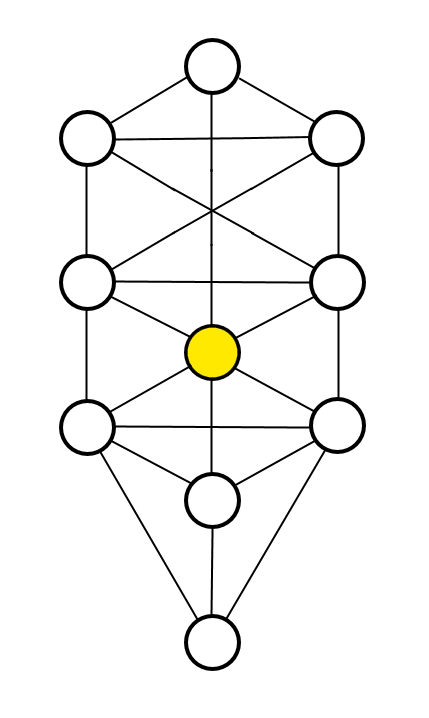
A step beyond Hod and Netzach, on the center lane.
Twilight starts very early and ends very late. The Sun is always accompanied by sun-dogs, and there are auroras visible all over the planet every night, the stars always appear bright, and a bright gegenshein shows up whenever the moon is not up at night.
The world has the same spread of climates as Malkoth Earth, but very little cloud cover. Rain and snow clouds show up quickly, dump their loads, and vanish again. Gold and diamonds are abundant. Flowers, fur, feathers, and eyes trend heavily to yellow and white.
The human population is dominated by high-magic humans, nephilim, and people with strong traces of nephil blood showing in size (up to eight feet tall) and/or super powers. There are also djinn, Fair Folk, ljösalfar, and fire elementals. Magical animals include phoenixes, salamanders, griffins, and dragons. There are many beast-fays. Disease of any kind is unknown, so most creatures are handsome specimens of their kinds.
Societies divide into monarchical city-states, sometimes organized into empires, and pastoralism.
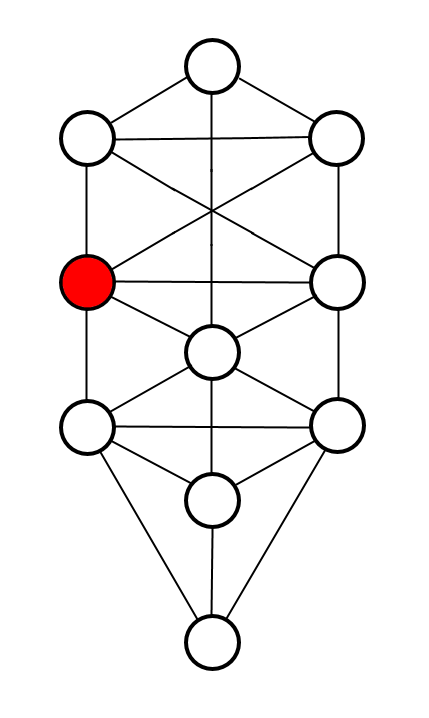
Further than Tiphereth, on the left lane. The Cadmon Cluster is out there, including the zone called Beraïd Torgon, where Gus and Doug got shanghaied to.
Grand Normandy has an outpost here called Gevurah-Set, approximately where Istanbul would be. It's a fortress.
Sunsets and sunrises are always full of fiery red, and Mars blazes bright. The Moon is further and smaller, and there is a second one, close but tiny, barely a disc, that goes overhead several times a day.
It is a dry world, with red deserts and bare rock, meagerly watered by canals coming down from the ice caps. (Sound familiar?) Sandstorms are common, rain unknown, snow limited to the ice caps. Iron and rubies are common. Biological coloration is often red or ruddy brown.
The population is human dominated by high-magic humans blending into nephilim, often displaying super-powers. There are also djinn, dwarves, goblins, individuated elementals of fire and metal, and beast-fays of large predators. Unearthly animals are common, including dragons and sandworms. There are also jann, phoenixes, and artificial monsters such as rogue mecha, golem beasts, and laboratory creations.
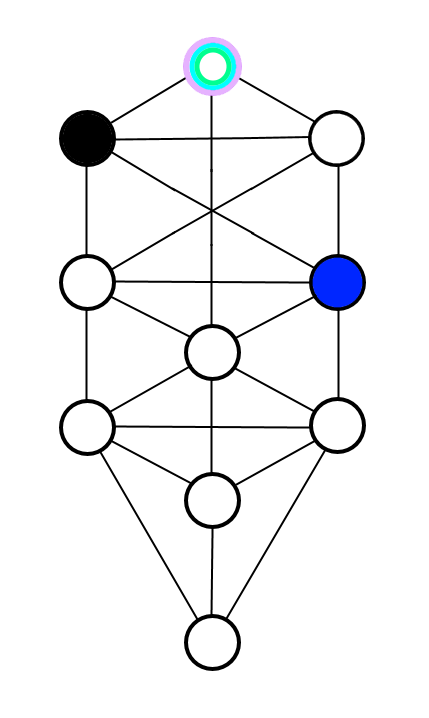
Nomads wander the wastes and walled fortress city-states play endless games of empire along the canals. Magic and mad science are equally common.
Rumor percolates down of little-known zones labeled Hesed, Binah, Chokhmah, and Keter. Grand Normandy has had a few successful expditions into Hesed.
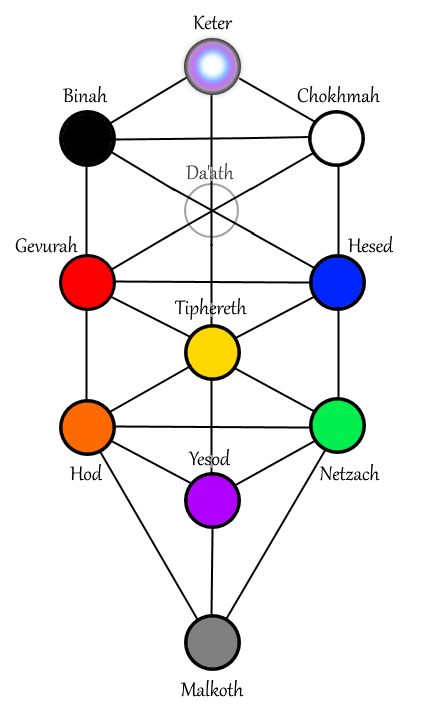
Return to Inkliverse
Return to Wind Off the Hilltop
Copyright © Earl Wajenberg, 2022